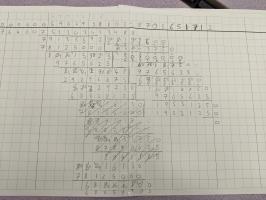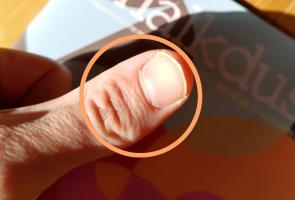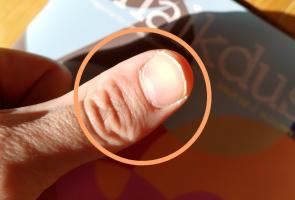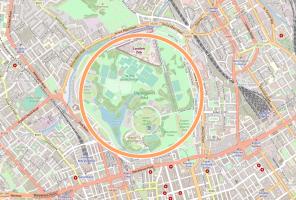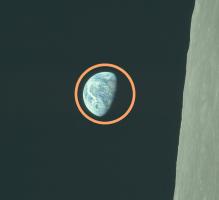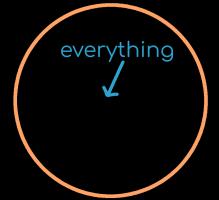Blog
2022-03-14
A few weekends ago, I visited Houghton-le-Spring
to spend two days helping with an attempt to compute the first 100 decimal places of π by hand. You can watch Matt Parker's video about our
calculation to find out about our method and how many correct decimal places we achieved.
Spending two days computing an approximation of π led me to wonder how accurate
calculations using various approximations of π would be.
One nice way to visualise this is to ask: what is the largest circle
whose area can be correctly computed to the nearest mm² when using a chosen approximation of π? In this
blog post, I'll answer this question for a range of approximations of π.
3
First up, how about the least accurate approximation we could possibly use: π = 3.
Using this approximation, the areas of circles with a radius of up to 1.88mm could be calculated
correctly to the nearest mm². That's a circle about the size of an ant.
Today is Pi Day, as in the date format M.DD, today's date is the first three digits of π.
Using this approximation, circles with a radius of up to 17.7mm or 1.77cm can be calculated correctly
to the nearest mm². That's a circle about the size of my thumb.
In the date format DD/M, 22 July gives an approximation of π that is more accurate than 3.14.
Using this approximation, circles with a radius of up to 19.8mm or 1.98cm can be calculated correctly
to the nearest mm². That's a slightly bigger circle that's still about the size of my thumb.
In Houghton-le-Spring, our final computed value was 3.1415926535886829815214...
The first 11 decimal places of this are correct.
Using this approximation, circles with a radius of up to \(6.71\times10^5\)mm or 671m can be calculated correctly
to the nearest mm². That's a circle about the size of Regent's park.
The 100 decimal places we were aiming for
If we'd avoided any mistakes in Hougton-le-Spring, we would've obtained the first 100 decimal places
of π. Using the first 100 decimal places of π, circles with a radius of up to \(7.8\times10^9\)mm
or 7800km can be calculated correctly
to the nearest mm². That's a circle just bigger than the Earth.
In 1873, William Shanks computed 707 decimal places of π in Houghton-le-Spring. His first 527
decimal places were correct. Using his approximation, circles with a radius of up to approximately
\(10^{263}\)mm
or \(10^{244}\) light years can be calculated correctly
to the nearest mm². The observable universe is only around \(10^{10}\) light years wide.
That's a quite big circle.
(Click on one of these icons to react to this blog post)
You might also enjoy...
Comments
Comments in green were written by me. Comments in blue were not written by me.
⭐ top comment (2022-08-15) ⭐
When does "MM" give 14 for the month?Steve Spivey
I wonder if energy can be put into motion with pi, so that would be a lot of theoretical energy
Willem
Add a Comment
2020-07-29
A week ago, it was 22 July: Pi Approximation Day.
22/7 (22 July in DD/M format) is very close to pi, closer in fact than 14 March's
approximation of 3.14 (M.DD).
During this year's Pi Approximation Day, I was wondering if there are other days that give good
approximations of interesting numbers. In particular, I wondered if there is a good 2π (or τ)
approximation day.
π is close to 22/7, so 2π is close to 44/7—but sadly there is no 44th July.
The best approximation day for 2π is 25th April, but 25/4 (6.25) isn't really close to
2π (6.283185...) at all. The day after Pi Approximation Day, however, is a good approximation of 2π-3 (as π-3 is
approximately 1/7). After noticing this, I realised that the next day would be a good approximation
of 3π-6, giving a nice run of days in July that closely approximate expressions involving pi.
After I tweeted about these three, Peter Rowlett suggested
that I could get a Twitter bot to do the work for me. So I made one:
@HappyApproxDay.
Since writing this post, Twitter broke @HappyApproxDay by changing their API, but the bot lives on on
Mathstodon (@HappyApproxDay@mathstodon.xyz)
and Bluesky (@happyapproxday.bsky.social).
@HappyApproxDay is currently looking for days that approximate expressions involving
π, τ, e, √2 and √3, and approximate the chosen expression better than
any other day of the year. There are an awful lot of ways to combine these numbers, so @HappyApproxDay@mathstodon.xyz
looks like it might be tooting quite a lot...
Edit: Added Mastodon and Bluesky links
(Click on one of these icons to react to this blog post)
You might also enjoy...
Comments
Comments in green were written by me. Comments in blue were not written by me.
Add a Comment

